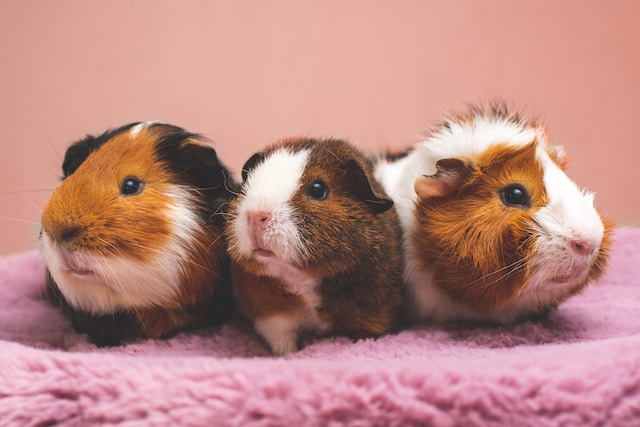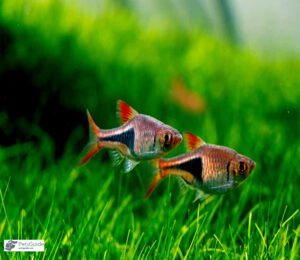
How to Train Your Guinea Pig: Tips and Techniques
Contents
Sure, guinea pigs are adorable, but they can also be a handful. In this post, I’ll show you how to train your pet guinea pig so it listens to your cues and knows what you want from it when you give them commands.
Build A Training Area
It’s important to have a training area where you and your guinea pig can be comfortable. This should be a quiet area where he feels safe, but also where you can spend time with him without distractions. If your guinea pig has been trained at home in the past and is used to being around other pets or children, then this may not be necessary–but if they’re new at it or shy in general (and most are), then having them in their own space will help them feel less anxious and more willing to learn new things.
If possible, choose an indoor location that’s free from distractions like loud noises or busy traffic patterns outside the window; these things can make it difficult for your pet to focus on what he’s doing at any given moment!
Create A Stimulus
A stimulus is a cue that tells your guinea pig to do something. This can be anything from food to touch, and it’s important for training because it helps your guinea pig understand what you want him or her to do in response. For example, if you want your guinea pig to come when called, then saying “come here” when they’re nearby is probably not going to work at first–they’ll just ignore you! You need some sort of stimulus that will get their attention (like tapping on the cage bars) so that they associate this with coming when called instead of ignoring it altogether.
Once you’ve chosen your stimulus and know how best for your pet respond when faced with it, try practicing regularly over time until he or she associates it with good things happening (like treats!).
Use Positive Reinforcement
Guinea pigs are easily trained. In fact, they’re so easy to train that you may feel like a fool for not having done it sooner! All you need is some positive reinforcement and patience.
Here’s how:
- Reward good behavior with something delicious. Guinea pigs love carrots (and other vegetables), so if your guinea pig does something good, give him or her a treat! You can also reward bad behavior with food as well–it’s just important not to overdo it when doing this because too much sugar can be dangerous for guinea pigs’ health.
- Reward good behavior with praise from human beings who care about them. The same goes here; if they do something nice enough for someone else to notice, let them know that person appreciates what they did! They’ll feel great about themselves because of this kind gesture on your part! However, don’t forget that getting attention from humans isn’t always what we want all the time; sometimes we just want peace & quiet…so try not paying too much attention until after the deed has been done first before rewarding yourself with praise afterward instead!
Be Consistent
- Don’t give up. If the guinea pig doesn’t respond right away, keep working at it!
- Consistency is key to training your guinea pig. If you are not consistent in your training methods and expectations for the animal, it won’t learn what you want it to do or how you want it to behave (or even if there’s a difference between those two things).
Reward Only The Correct Behaviors
When training your guinea pig, it is important to only reward the correct behaviors. If you reward incorrect behaviors, then your guinea pig will continue to perform those incorrect behaviors because they will be rewarded with food or treats. Conversely, if you punish an incorrect behavior with no reward at all and then try to train them again later on in the future (with another treat), they may become confused as to what they should do instead of the previous incorrect behavior they were punished for doing earlier on during training sessions.
To avoid this from happening with your pet guinea pig:
- Only reward correct behaviors! Do not give any type of reinforcement whatsoever for incorrect ones; otherwise this will encourage more unwanted behavior from them over time instead of helping them learn how best behave around humans properly so that everyone involved feels comfortable together during interactions between each other’s needs being met adequately enough where both parties are satisfied overall without feeling frustrated about something happening between two people who aren’t communicating well enough together yet due
Look For An Understanding Of The Cue
The first thing to do is to learn how to communicate with your guinea pig. Clicker training is a positive reinforcement method that uses a clicker (or other sound) as an auditory marker for the behavior. The guinea pig learns that when it hears the click, it has done something good and will be rewarded with food or another reward afterwards.
If you are new to clicker training, there are plenty of videos online where you can see how others do it, so check them out! You might want to start with some basic behaviors like sitting on command or lying down before moving onto more complicated ones like walking from one side of the room over obstacles and back again–this will help build up trust between human and rodent so they know what’s expected from both sides when learning new things together!
You can train your guinea pig to respond to cues so that it knows exactly what you want from it.
- Guinea pigs are intelligent and social animals, but they don’t always know what we want from them. This can be frustrating for both you and your pet guinea pig when you’re trying to teach him or her something new–like how to go into a cage or box on cue, or come when called.
- Here’s how: Start with teaching basic training commands like “sit” (you can use food treats as rewards), then move on to more complicated tricks like walking backward or rolling over in response to verbal cues such as “roll over!”
Conclusion
Once you have trained your guinea pig, you can use it to help with your daily activities. For example, if you’re struggling with mobility issues and need help getting around the house or yard, a trained guinea pig might be able to assist by carrying items or pushing buttons on appliances like remotes or phones.



Average Rating